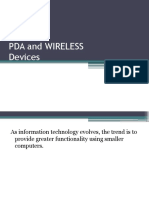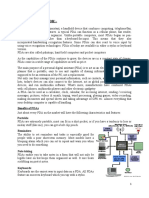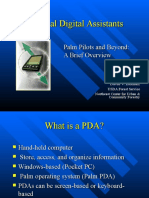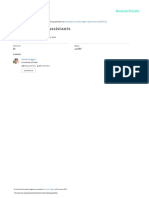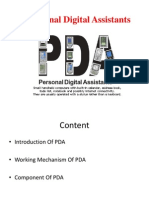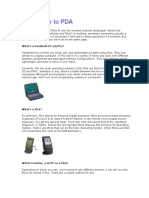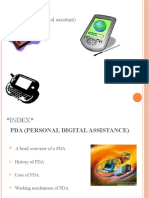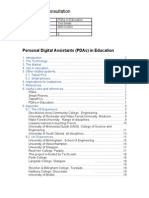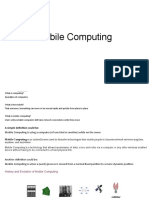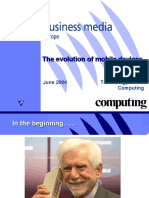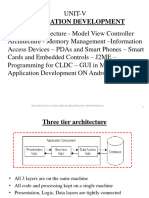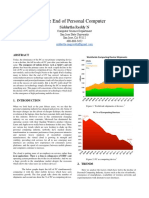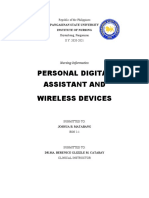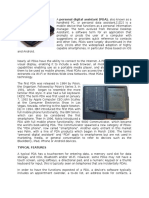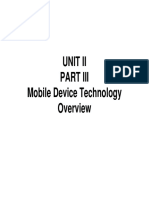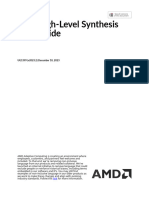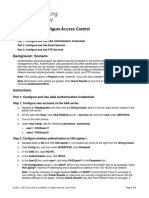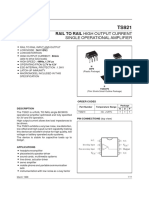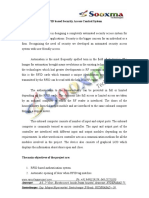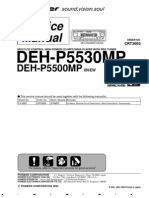Acknowledgement
All the thanks to almighty Allah, who bestowed us with courage & ability to
achieve this opportunity.
In the VERY FIRST, we are praying and thanking to ALLAH to bless
us with courage and success in achieving our target. (INSHAH-
ALLAH)
We wish to convey our sincere & deepest gratitude and great acknowledgement to
our respected teacher Miss Zainab Rehman who has provided us an opportunity
to search for different PDAs. We have visited markets for our research and we are
in no confusion for saying that this activity has enhanced our knowledge about the
PDAs. It is the result of the efforts of our respected teacher who provided us all the
possible directions and information for this purpose & we are thankful to all the
consulting celebrities who also helped us in performing this task & we are especially
thankful to our parents & friends who help us to do this task.
1
�INDEX
SUMMARY.........................................................................................................................3
INTRODUCTION OF PDA:...............................................................................................4
HISTORY OF PDA:............................................................................................................4
Major Categories:.................................................................................................................5
FEATURES OF PDA:.........................................................................................................5
INTRODUCTION ABOUT HTC:......................................................................................7
Product range.......................................................................................................................8
Features ...............................................................................................................................8
INTRODUCTION TO I-MATE:.......................................................................................10
FEATURES:......................................................................................................................10
COMPARISON BETWEEN I-MATE AND HTC:..........................................................12
...........................................................................................................................................13
REFERENCE:....................................................................................................................13
2
� SUMMARY
This is a market research report with historical data of PDA The
report gives a perspective and a top-down view of the PDA
industry — past, present and future trends. The report and forecast
includes estimates of seven leading PDA.
PDAs the emerging handheld PC. The PDA market is now 15
years old and got its start in 1990 with Apple’s Newton. The
Newton is considered a failure, but a new industry was born and
the name used by Apple—Programmable Digital Assistant (PDA)
is still with us.
3
�INTRODUCTION OF PDA:
A personal digital assistant (PDA) is a handheld computer, also known as a palmtop
computer. Newer PDAs also have both color screens and audio capabilities, enabling
them to be used as mobile phones, (smartphones), web browsers, or portable media
players. Many PDAs can access the Internet, intranets or extranets via Wi-Fi, or Wireless
Wide-Area Networks (WWANs). Many PDAs employ touch screen technology.
HISTORY OF PDA:
1980 - Psion defined the PDA.
1983 - The first PDA is considered to be the CASIO PF-3000
released in May. GO Corp. was also pioneering in the field.
1993 - Apple tried to copy Psion's success, Apple launched
the Newton Message Pad One of the first to use touch-sensitive screens and handwriting
recognition software
This bulky device is the Apple Newton Message Pad. Introduced in
1993, it was the first Personal Digital Assistant.
1995 - US Robotics acquired Palm Computing leading to the
launch of the Palm Pilot in.
1996 - The Pilot was introduced by US Robotics; Data entry
was made using a stylus and Graffiti handwriting system (a simplified alphabet for
handwriting recognition)
1997 - Apple produced eMate, a new PDA, but handwriting recognition software was
not fast enough or reliable enough hence in 1998 Apple discontinued its PDA
development.
1997 -US Robotics was bought by 3Com and Palm Pilots became major players in the
PDA market, Palm introduced even smaller devices.
1999 - Palm was leading the industry with the Palm V and its Graffiti software, The
Palm VII added wireless access to the Internet. Palm Computing's sales for 2001 are
estimated at 13 million devices making it the industry's leader.
4
�Major Categories:
Hand-held computers and palm-sized computers. The major differences between
the two are size, display and mode of data entry.
Hand-held computers:
Compared to palm-sized computers, tend to be
larger and heavier. They have larger liquid crystal
displays (LCD) and use a miniature keyboard, usually in combination with touch-screen
technology, for data entry.
Palm-sized computers:
PALM SIZED COMPUTERS are smaller and lighter.
They have smaller LCDs and rely on stylus/touch-screen
technology and handwriting recognition programs for data
entry.
FEATURES OF PDA:
Currently, a typical PDA has a touch screen for entering data, a memory card slot
for data storage and at least one of the following for connectivity: IrDA, Bluetooth and/or
WiFi. However, many PDAs (typically those used primarily as telephones) may not have
a touch screen, using softkeys, a directional pad and either the numeric keypad or a
thumb keyboard for input.
Software typically required to be a PDA includes an appointment calendar, a to-
do list, an address book for contacts and some sort of note program. Connected PDAs
also typically include E-mail and Web support
Memory cards
Although many early PDAs did not have memory card slots now most have either
an SD (Secure Digital) and/or a Compact Flash slot. Although originally designed for
memory, SDIO and Compact Flash cards are available for such things as Wi-Fi and
Webcams. Some PDAs also have a USB port, mainly for USB flash drives. Some PDAs
5
�are now compatible with micro SD cards, which are physically much smaller than
standard SD cards.
Wired connectivity
While many earlier PDAs connected via serial ports or other proprietary format,
many today connect via USB cable. This served primarily to connect to a computer, and
few, if any PDAs were able to connect to each other out of the box using cables, as USB
requires one machine to act as a host - functionality which was not often planned. Some
PDAs were able to connect to the internet, either by means of one of these cables, or by
using an extension card with an ethernet port/RJ-45 adaptor.
Wireless connectivity
Most modern PDAs have Bluetooth wireless connectivity, an increasingly popular
tool for mobile devices. It can be used to connect keyboards, headsets, GPS and many
other accessories, as well as sending files between PDAs. Many mid-range and superior
PDAs have Wi-Fi/WLAN/802.11-connectivity, used for connecting to Wi-Fi hotspots or
wireless networks. Older PDAs predominantly have an IrDA (infrared) port; however
fewer current models have the technology, as it is slowly being phased out due to support
for Bluetooth and Wi-Fi. IrDA allows communication between two PDAs: a PDA and
any device with an IrDA port or adapter. Most universal PDA keyboards use infrared
technology because many older PDAs have it, and infrared technology is low-cost and
has the advantage of being permitted aboard aircraft
Synchronization
An important function of PDAs is synchronizing data with a PC. This allows up-
to-date contact information stored on software such as Microsoft Outlook or ACT! to
update the database on the PDA. The data synchronization ensures that the PDA has an
accurate list of contacts, appointments and e-mail, allowing users to access the same
information on the PDA as the host computer.
The synchronizing also prevents the loss of information stored on the device in
case it is lost, stolen, or destroyed. Another advantage is that data input is usually a lot
quicker on a PC, since text input via a touch screen is still not quite optimal. Transferring
data to a PDA via the computer is therefore a lot quicker than having to manually input
all data on the handheld device
KEY BOARDS:
6
� it is fairly easy learn and use a stylus to enter characters through PDA touch
sensitive screens, but some users will prefer to use a keyboard. Another option is to add
an external keyboard via the unit's expansion slot
VOICE RECORDER:
Another great way to reduce the amount of equipment you carry around is to
choose a PDA with a built-in microphone and voice recorder application. This feature is
becoming more standard
DIGITAL CAMERA:
Simple plug-in digital cameras for PDA have been available for a few years, but
the newest devices feature built-in cameras, some with video recording capability. This is
also a trend in the cell phone market, and it seems inevitable that we will see further
merging of technologies lead to cell phones with cameras and organizers soon.
GPS:
GPS receivers can be added to some PDAs via expansion slots, but Garmin, a
worldwide leader in GPS technologies, has introduced a Palm-based handheld with
integrated GPS receiver. The unit FEATURES a high resolution color screen for
rendering street maps that can be used with the receiver.
INTRODUCTION ABOUT HTC:
HTC Corporation (TSE: 2498), formerly
High Tech Computer Corporation, is a Taiwan-
based manufacturer of primarily Microsoft
Windows Mobile-based portable devices. It was
founded on May 15, 1997 and initially was
strictly an outsourcing company, an original
design manufacturer (ODM). Today, HTC
provides its own HTC self-branded products, as
well as supporting its operator-branded products
and its original equipment manufacturer (OEM) partners. HTC also owns Dopod as a
subsidiary company. HTC is also a member of the Open Handset Alliance, meaning that
it will conform to standards that allow the open source Android operating system to run
on its hardware; The T-Mobile G1 (originally conceived as HTC Dream) is the first
phone to the market that uses the Android mobile device platform. It was released for
pre-order through T-Mobile on September 23, 2008, and became available in stores on
October 22, 2008.[1] Android Dev Phone is also manufactured by HTC.
7
�Product range
HTC products are sold under several brand names — HTC, Dopod (HTC's subsidiary
company) and Qtek — and are often rebranded by major telecommunication carriers such
as Orange, T-Mobile, Verizon Wireless, Sprint Nextel, O2, Vodafone, AT&T, Alltel, Bell
Mobility and Telus Mobility.
HTC is the ODM for the following companies that retail Windows Mobile-based PDAs:
Dell, Fujitsu-Siemens, HP/Compaq, i-mate, Krome, Sharp Corporation, and UTStarcom.
It also manufactures ultra-mobile PCs.
Features
More powerful than any mobile
communications device you've seen before,
the HTC TyTN II takes global connectivity
to the next level.
Staying connected means staying
ahead. The TyTN II supports the full
spectrum of network standards, guaranteeing
that you will stay in touch ANYWHERE in
the world. With an internet connection via
3.5G HSDPA that is nine times faster than
3G, using the TyTN II to download files and
surf the Web is a breeze.
Communicating on the go is easier
than ever with an innovative, ergonomic
LCD design that positions the touch screen
perfectly for reading and creating e-mails, using applications, or even just playing games.
Important information is just a glance away with HTC Home, which displays a
big clock and provides live weather updates, access to a quick application launcher and
one touch ring settings, easy photo dialing, and more.
With a complete suite of Microsoft Office Mobile applications, including Outlook
Mobile, Word Mobile, Excel Mobile, and PowerPoint Mobile, being out of the office
doesn't have to mean you're out of the loop. Always ready for business - and pleasure -
the HTC TyTN II makes sure you are too.
Highlights
Enjoy super fast connectivity worldwide with HSDPA/UMTS, GSM, GPRS,
EDGE, Wi-Fi, and Bluetooth
Do more on the move with Windows Mobile 6 Professional - instant e-mail,
calendar, notes, tasks, and contacts synchronization
Work in comfort with the unique tilting touch screen and the slide-out QWERTY
keyboard
8
� Take your office with you - download, view, and edit documents wherever you go
with the Office Mobile Suite and PDF viewer
Find your way to your destination easily with built-in GPS navigation and
software .
• Capture magic moments with the built-in 3 megapixel camera with auto
focus
• General
• 2G Network GSM 850 / 900 / 1800 / 1900
• 3G Network HSDPA 850 / 1900 / 2100
• Display
• Type TFT touchscreen, 65K colors
• Size 240 x 320 pixels, 2.8 inches
• Handwriting recognition
• QWERTY keyboard
• Ringtones
• Type Polyphonic (72 channels), MP3
• Vibration Yes
• Memory
• Phonebook Practically unlimited entries and fields, Photocall
• Call records Practically unlimited
• Card slot microSD (TransFlash), buy memory
• 128 MB RAM, 256 MB ROM
• Qualcomm MSM7200, 400 Mhz processor
• Data
• GPRS Class 10 (4+1/3+2 slots), 32 - 48 kbps
• HSCSD No
• EDGE Class 10, 236.8 kbps
• 3G HSDPA 3.6 Mbps
• WLAN Wi-Fi 802.11b/g
• Bluetooth Yes, v2.0
• Infrared port No
• USB Yes, v2.0
• OS Microsoft Windows Mobile 6.0 Professional
• Messaging SMS, MMS, Email, Instant Messaging
• Browser WAP 2.0/xHTML, HTML (PocketIE)
• Camera 3.15 MP, 2048x1536 pixels, autofocus, video; secondary VGA
videocall camera
• Built-in GPS receiver
• A-GPS function
• Video call
• Pocket Office (Word, Excel, PowerPoint, PDF viewer)
• Java MIDP 2.0
• Voice memo
9
� • Media Player 10
• Video/audio album
• Built-in handsfree
• Battery
• Standard battery, Li-Po 1350 mAh
• Stand-by Up to 400 h
• Talk time Up to 6 h
• Physical Description
• Size Dimensions 112 x 59 x 19 mm
• Weight 190 g
INTRODUCTION TO I-MATE:
I-mate (LSE: IMTE) is a company selling Windows Mobile-powered devices.
The Group was launched by now CEO Jim Morrison. Jim was involved in the team at O2
that designed the first O2 Xda Pocket PC phone. He subsequently obtained rights to HTC
products outside of O2 territories and setup i-mate with his team in Glasgow, Scotland to
deliver into the market place. It is now based in Dubai, United Arab Emirates, and is
operating in the UK, Italy, Armenia, Australia, India, the U.S.A and South Africa. At the
end of March 2006, i-mate had sold over 420,000 Windows Mobile phones
FEATURES:
After the leading manufacturer of
Windows Mobile phones HTC announced
that it is planning to start selling models
under its own brand name, I-mate whose
entire line was comprised of phones
manufactured by HTC turned to another
manufacturer who will be able to handle
with this job.
The first unit that appeared was the
JAQ, manufactured by Inventec - a Pocket
PC phone in candybar design, with
landscape display and full QWERTY
keyboard; it reminds of the Motorola Q and
Samsung Blackjack because of its form, but
its main difference (and advantage) is that the JAQ runs Windows Mobile for Pocket PCs
instead of for Smartphones. JAQ3 is its successor, having smaller dimensions (especially
thickness) and improved design. It is a device with high functionality and keyboard that
is comfortable for messaging purposes.
• Specification
• General
• Network GSM 850 / GSM 900 / GSM 1800 / GSM 1900
10
�• Display Type TFT touchscreen, 65K colors
• Size 320 x 240 pixels, 2.5 inches
• Handwriting recognition
• QWERTY keyboard
• Ringtones
• Type Polyphonic (64 channels), MP3
• Vibration Yes
• Memory
• Phonebook Practically unlimited entries, Photocall
• Call records Practically unlimited
• Card slot microSD
• 64MB RAM
• 128MB ROM
• TI OMAP850 200Mhz processor
• Data
• GPRS Class 10 (4+1/3+2 slots), 32 - 48 kbps
• HSCSD No
• EDGE Class 10, 236.8 kbps
• 3G No
• WLAN Wi-Fi 802.11 b/g
• Bluetooth Yes, v1.2 with A2DP
• Infrared port Yes
• USB Yes, v1.1
• Features
• OS Microsoft Windows Mobile 5.0 PocketPC
• Messaging SMS, MMS, Email, Instant Messaging
• Browser WAP 2.0/xHTML, HTML (PocketIE)
• Camera 2 MP, 1600x1200 pixels, video
• Pocket Office(Word, Excel, Outlook, PDF)
• Java MIDP 2.0
• Voice memo
• MP3/AAC player
• Video/audio album
• File manager
• Built-in handsfree
• Battery
• Standard battery, Li-Ion 1200 mAh
• Stand-by Up to 150 h
• Talk time Up to 4 h
• Physical Description
• Size Dimensions 126 x 67.5 x 14.5 mm
• Weight 160 g
11
�COMPARISON BETWEEN I-MATE AND HTC:
HTC I-MATE
CAMERA 3 megapixel camera with auto 2 mega pixel with auto focus
focus
NETWORK GSM same Same
Display TFT Touchscreen 65K TFT Touchscreen 65K
SIZE 240*320 Pixels (2.8 inch) 320*240 Pixels (2.5 Inch)
Key Board QWERTY QWERTY
Polyphonic 72 Channels MP3 64 Channels MP3
RAM 128 MB 64 MB
ROM 256 MB 128 MB
BLUE TOOTH V 2.0 v1.2 with A2DP
Infrared port NO YES
USB v 2.0 V 1.1
GPS Built in No
Price Expensive Less Expensive
PLAYER Media Player 10 MP3/ AAC Player
Battery battery, Li-Po 1350 mAh battery, Li-Ion 1200 mAh
Stand By 400 h 150 h
Size 112 x 59 x 19 mm 126 x 67.5 x 14.5 mm
Weight 190 g 160 g
12
�REFERENCE:
1. http://www.askcache.com/webcp?q=features+of+pdas&t=features%2B%3Fof
%2Bpdas&r=features%2Bof
%2Bpdas&cache=00*132ay5fvw57r9&qlang=3&url=http%3A%2F
%2Fwww.anewpda.com%2Fpdas.html&page=1&o=0&l=dir&ws=1&ax=1
2. www.pdasnews.com
3. www.htc.com
4. www.consumersearch.com/pda-reviews/comparison
5. www.i-mate.com
6. http://en.wikipedia.org/wiki/Personal_digital_assistant
7. http://en.wikipedia.org/wiki/I-mate
8. http://en.wikipedia.org/wiki/HTC_Corporation
9. Portable Electronics Product Design & Development
(For Cellular Phones, PDAs, Digital Cameras) BY Bert Haskell
13

